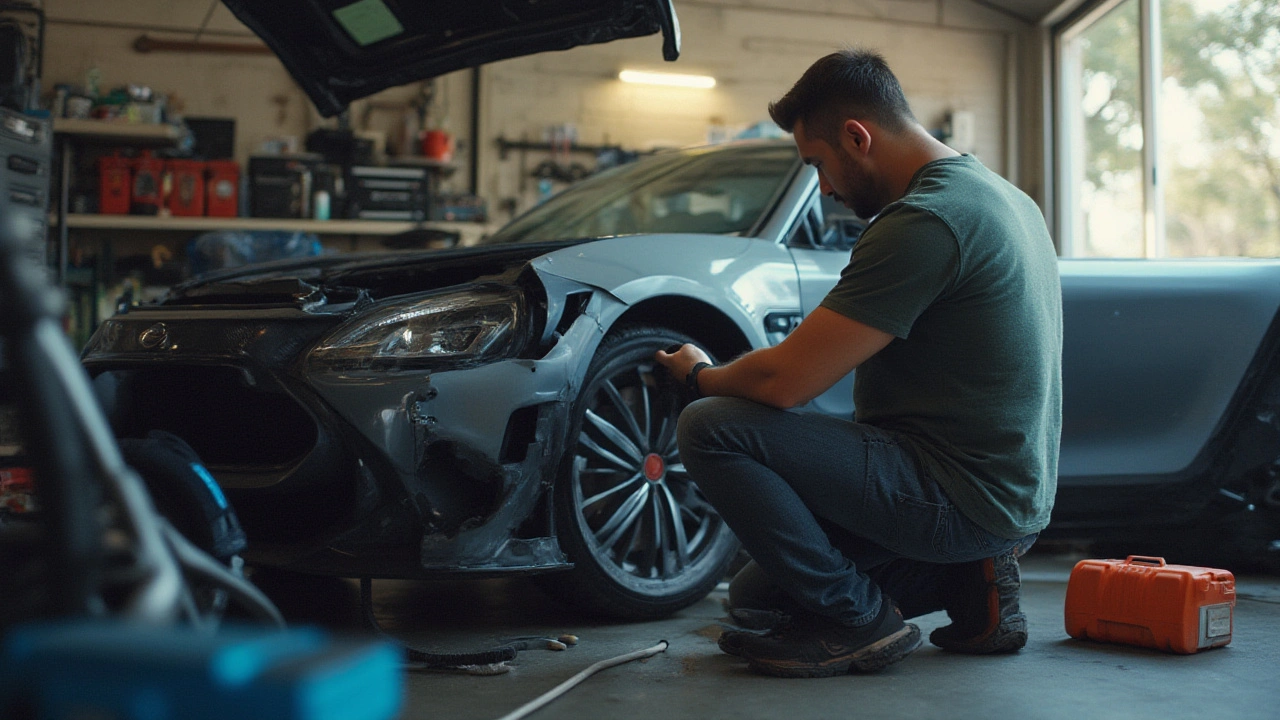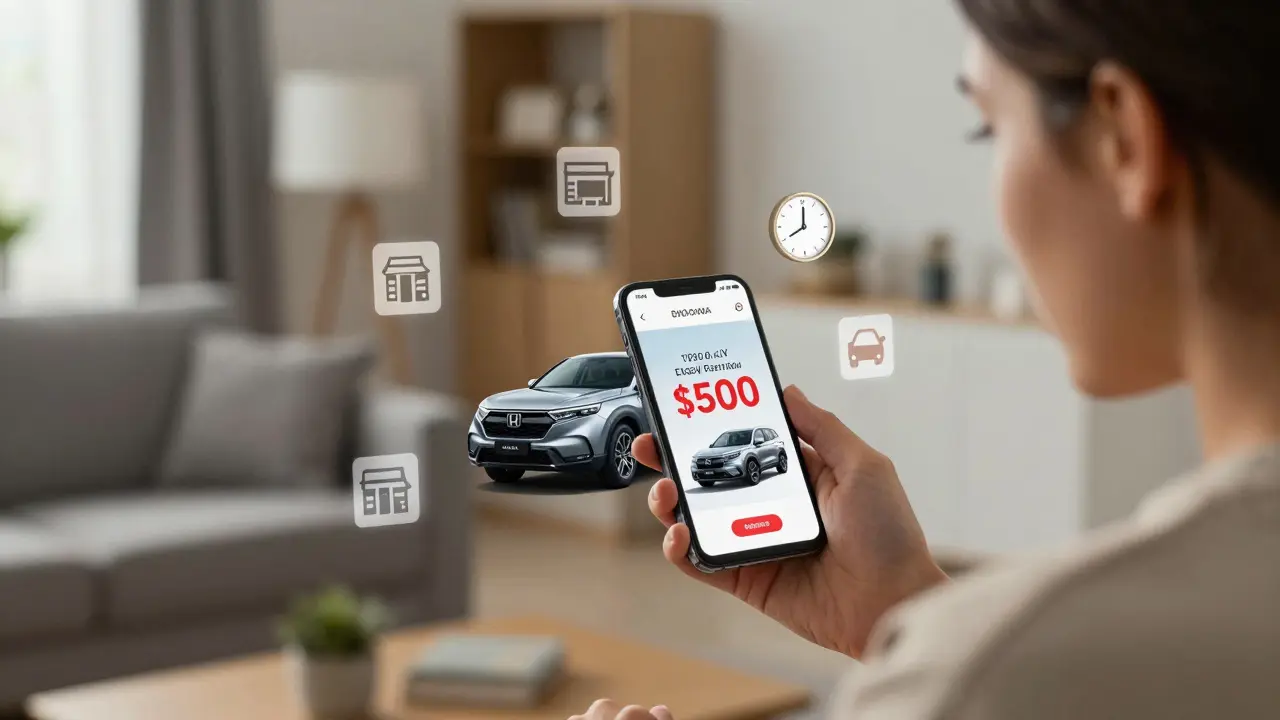If you think your car’s value is all about make, model, and year, you’re missing half the story. Ever heard a friend grumble about how much they lost selling their car, even though it looked practically new? Blame the wrong parts swapped at the wrong time. Car value is like a Jenga tower—swap even one block for the shoddy piece and the whole thing topples. Some upgrades can make your car a magnet for buyers; others are red flags that lower bids before they’re even made. Dig in, because what you bolt on or leave alone could mean thousands of dollars lost or gained when it’s time to sell.
Original Parts: The Gold Standard (and the Hidden Trap)
Most of us don’t give a second thought to what’s under the hood until something breaks. But buyers—and sharp-eyed appraisers—definitely do. Original Equipment Manufacturer (OEM) parts almost always hold more value than aftermarkets or no-name replacements. Just look at resale reports: Kelley Blue Book notes that cars with complete OEM maintenance histories routinely fetch at least 10-15% more than those with a hodgepodge of parts. But here’s the twist: original parts mean more than just the engine and transmission.
Wheels, headlights, seats, multimedia systems—yep, every component counts. Imagine trying to sell your three-year-old Corolla and a buyer spots a wobbly aftermarket steering wheel or a random touchscreen stereo. Not only does trust go down the drain, but you may end up being low-balled because buyers worry: what else was swapped out? Even little things, like poor-quality cabin filters or off-brand windshield wipers, can hint at a “budget maintenance” mindset. Some folks scoff and say, “Who cares about wipers?” But believe it or not, a prospective buyer who notices an unfamiliar brand will wonder if you skimped elsewhere.
Now, keeping all OEM parts can be expensive, especially if the car’s older or the manufacturer stopped offering certain pieces. Here’s an insider tip: if you upgrade or replace any part, save the original if you can, or at least get documentation. A lot of car enthusiasts on CarGurus and Bring a Trailer will pay extra for a trunk full of original parts, even if they aren’t installed. Having the stock radio, for example, alongside your fancy touchscreen? That’s like an ace up your sleeve for value-minded buyers.
Also, regular service using OEM fluids, filters, and belts counts. Documentation—receipts, records, photos—can tip the scale in your favor. And when in doubt, check your car’s VIN through services like CARFAX; many insurers and buyers will quietly research your car’s parts history before making an offer.
Upgrades That Actually Add Value (and What’s Just a Waste)
Let’s bust a myth: not every shiny new part increases value. Some do nothing, some even pull your value down. It’s about what buyers in your car’s segment expect. If you’re driving a high-performance Audi, a name-brand, high-flow exhaust might get gearheads excited. But throw that same system on a commuter sedan, and you’ll just invite suspicion (and maybe a few lowball offers). The big winner for upgrades? Think safety and convenience.
- Backup Cameras and Sensors: With new cars federally mandated to have these features since 2018, retrofitting an older model can attract higher offers. People want safety and will pay up for a seamless OEM-style install. Glued-on, afterthought kits? Skip those; buyers can spot the difference in seconds.
- Infotainment Systems:
- Name-brand units (think Kenwood, Alpine, Pioneer) that blend straight into the dash—no chopped wiring or duct-taped installations—often bump your value. Integrated Apple CarPlay/Android Auto? Buyers love it. A janky, color-clashing head unit? Not so much.
- New Tires and Brakes:
- Nothing says “well-maintained” like a car rolling on fresh rubber or boasting new brake pads from a known brand. Think Michelin, Bridgestone, Akebono. Cheap no-names do the opposite—some buyers even walk away from too-good-to-be-true tire photos in listings.
- Quality Suspension Components:
- Well-known aftermarket options like Bilstein shocks or Eibach springs can attract buyers if they match the car’s style and age. But wild, slammed suspensions or sketchy “lift kits” do more harm than good, making insurance (and neighborhood speed bumps) a nightmare.
If you’re thinking about performance upgrades—cold air intakes, fancy exhausts, tuning chips—just remember: unless you’re selling to another enthusiast through a forum, you’ll actually turn off regular buyers. It’s wild how many people get excited for a turbo timer or a blow-off valve, only to realize the mainstream market wants reliability, not quarter-mile records. As for aesthetics—window tinting, spoilers, body kits—taste and quality matter. Clean, subtle upgrades can help; wild graphics and rattle-can paint usually kill deals.

Aftermarket Pitfalls: Why Cheaper Isn’t Always Smarter
Temptation is everywhere. You spot a clutch for half the price on eBay, or a set of brake pads bundled with free shipping. But here’s the thing—saving $100 now can cost you a thousand later. A survey by the Automotive Service Association found that shoppers using non-approved (read: not OEM or certified aftermarket) parts recovered, on average, 12% less during resale. Why? Everything from weird fitment issues to warranty denials. Ever had a mechanic refuse to install a budget-brand alternator? There’s a reason. Bad parts break, ruin related components, or set off error codes that freak out buyers.
Worse, buyers in 2025 are savvier than ever. Tools like VINCheckPro and even free phone apps let anyone check if a car’s had recalled or low-quality replacement parts installed. Run afoul of these, and your listing can get flagged or ghosted. Some carmakers (Subaru, Honda, Toyota, for starters) now allow buyers to check factory service histories for free, so inaccuracies or mystery parts stand out.
Paint mismatches are another silent killer. Ever notice when a fender or door looks faded, or the metallic flakes don't quite match up? Mismatched paint screams accident repairs—even if the fix was minor. It instantly drops your car’s value. Even minor swaps, like changing halogen headlights to cheap LEDs, can trip up electrical systems or fail inspection. When in doubt, talk with a local shop you trust, or check enthusiast forums for parts that boost—not sink—value.
There are exceptions. Some certified aftermarket pieces (think Bosch, Brembo, Monroe) can actually elevate a car’s worth, as long as the installation’s clean and the receipts are handy. The rule: legit brands, pro install, and records you can show off. Anything less can get you ghosted by serious buyers. If you DIY, document every step. Take before-and-after photos, and keep old parts in the garage for negotiation time.
Smart Moves to Protect (or Even Increase) Value
No one wants to lose money on their ride. The good news? With a little strategy, you can keep your car’s value steady—or even nudge it higher. Here’s what helps most:
- Document Every Replacement: Even something as simple as fresh floor mats or a new battery. Stack up those receipts in one place, so when someone checks out your ride, you look transparent and trustworthy.
- Keep the Stock Parts: If you upgrade—especially for a stereo or rims—stash the originals. Enthusiasts and collectors will pay, sometimes more than you expect, for cars with those hard-to-find pieces.
- Invest in Quality: Certified pre-owned is a buzzword for a reason. Name-brand tires, brakes, batteries. The cost is usually a few bucks more, but the peace of mind for buyers? Priceless. A single “Continental” on a set of “Linglong” tires can boost your classified response rate by 20% alone.
- Make Upgrades Reversible: Love custom headlights? Go for it—but avoid cutting up the factory harness or hacking the body. The next owner might want to go back to stock, and being able to switch everything back is a gold star in the used car world.
- Mind the Mileage: It sounds obvious, but the more you can prove regular, quality oil changes and part replacements by mileage—not just date—the better. Digital service records, oil change logs, and inspection stickers quietly bump up value.
- Be Honest in Listings: Don’t hide that aftermarket muffler or the upgraded brake calipers. Quality buyers will appreciate honesty, and shady omissions can come back to haunt you. Honesty is magnetic—it draws serious, ready buyers.
And here’s a final, often-missed trick: offer to include a free Pre-Purchase Inspection (PPI) from a local mechanic when selling. Cars with clear histories, quality parts, and confident sellers get snapped up—usually at or above asking. Stay wise, invest in the right parts, and your car’s value won’t just survive; it’ll turn heads for all the right reasons.






Adithya M
July 17, 2025 AT 22:43This post is spot on about car parts that drastically affect resale value. The engine, transmission, and tires are obviously the big three, but people often overlook things like brake condition and suspension health, which can tank value if neglected.
Also, it's key to avoid unnecessary flashy mods that don't add value or are outright a turnoff for buyers. Stock or close to stock usually sells better in most markets, especially for mainstream vehicles. No one wants to deal with weird aftermarket setups or excessively lowered suspensions that kill ride quality.
I'd add that documenting regular maintenance with receipts can boost buyer confidence massively — it makes the vehicle worth more in reality and perception.
Jessica McGirt
July 19, 2025 AT 12:13Thanks for the tips! One thing I'm curious about is the role of tech upgrades? Like aftermarket infotainment systems or safety features, do those typically add to a vehicle's resale value or hurt it?
It seems like some additions might appeal to younger buyers, but could they risk alienating traditional buyers? I'd love to hear if anyone has personal experience or data on that.
Also, would timing matter? For example, if a car is older and the tech is outdated, is it better to keep the original to maintain authenticity?
Donald Sullivan
July 22, 2025 AT 04:06No tech mod is going to save your resale value if your engine's shot or the car has rust in the critical frame areas. People sometimes waste time and cash on flashy upgrades while ignoring basic mechanical upkeep. It's like putting lipstick on a pig.
Honestly, if you want value, keep it clean, well-maintained, and stock where possible. Period. And keep it simple — overcomplicating anything kills value unless it's a super rare part that collectors want.
Tina van Schelt
July 25, 2025 AT 18:13It amazes me how the soul of a car is really in the details. Fresh brake pads and rotors can turn the whole vibe from sketchy to smooth, making a huge impression on buyers.
People often forget those subtle things that whisper quality and care. Upgraded headlights or pristine upholstery can light up the eyes of someone inspecting a vehicle — a little sparkle goes a long way.
But yeah, balance is key. Overdoing it with too many aftermarket gaudy parts can mess up the aura of the car.
Ronak Khandelwal
July 29, 2025 AT 16:40Absolutely love this breakdown! 🚗✨ In my experience, the harmony of the whole car tells a story. When every part is tuned and cared for, buyers feel they’re inheriting a masterpiece, not a money pit.
Replacing worn parts before sale isn’t just about value; it’s about respect for yourself and the next owner. A well-maintained suspension, fresh oil, and clean filters speak volumes about the car's life journey.
Oh, and don't sleep on small touches — a clean engine bay and little scent tricks 🧴 can really elevate the experience!
Jeff Napier
August 2, 2025 AT 04:00You know what? All this talk about parts and value is just a smoke screen hiding the truth. The whole market is rigged by big dealer networks and manufacturers who control pricing algorithms behind the scenes.
Sure, you can polish and pimp your ride, but they decide what the car's worth — it's just the illusion of free market choice. So maybe worrying too much about replacements and upgrades is chasing shadows when the puppet masters already set the strings.
But hey, for those who want to play along, sure, keep it stock and neat as the post says.
Sibusiso Ernest Masilela
August 3, 2025 AT 13:20Frankly, if you want to avoid embarrassing yourself, leave the cheap plastic crap alone. Honestly, it cheapens your car’s image instantly and screams ‘bargain bin special.’
Buyers with taste demand premium tires, genuine OEM parts, and a sound engine. Anything else? Pure garbage.
And if your brakes squeak or your dashboard looks like a toddler’s art project, expect to see your vehicle’s price sink faster than a lead balloon.
Daniel Kennedy
August 7, 2025 AT 11:46This is a solid thread full of patience and reflection. I’d just add one thing from experience: be realistic about the local market where you’re selling. What’s a must-have upgrade in one place might be a complete waste in another.
Also, always be upfront with buyers about any replaced parts or upgrades; honesty can build trust, which is invaluable. Keep detailed records and highlight those on your listing.
That transparency can make people more willing to pay a premium knowing they’re getting a cared-for vehicle.
Taylor Hayes
August 10, 2025 AT 06:26Along with all these great points, I’d encourage folks to think about how their upgrades impact future maintenance cost for the buyer. Sometimes, flashy mods can mean complicated fixes down the line, which scares off non-enthusiast buyers.
A well-rounded, sensible approach tends to keep more doors open for resale. And don’t forget the power of a professional-looking clean-up — it’s almost like a first date impression. You want the buyer to feel comfortable, not overwhelmed.
Ultimately, it’s about the story your car tells — keep that narrative clear and positive.
Sanjay Mittal
August 16, 2025 AT 21:53From a technical viewpoint, the lifeblood of your car’s value is indeed its mechanical integrity. Engine, transmission, brakes, tires — these are the parts that buyers care about most.
Electrical upgrades might be nice, but they pale compared to a solid drivetrain. Even cosmetic upgrades can’t compensate for wear in these core systems.
For anyone looking to enhance resale value, investing in a thorough diagnostic and fixing all critical faults is paramount. And keep the service history detailed and organized — it’s your warranty of reliability.